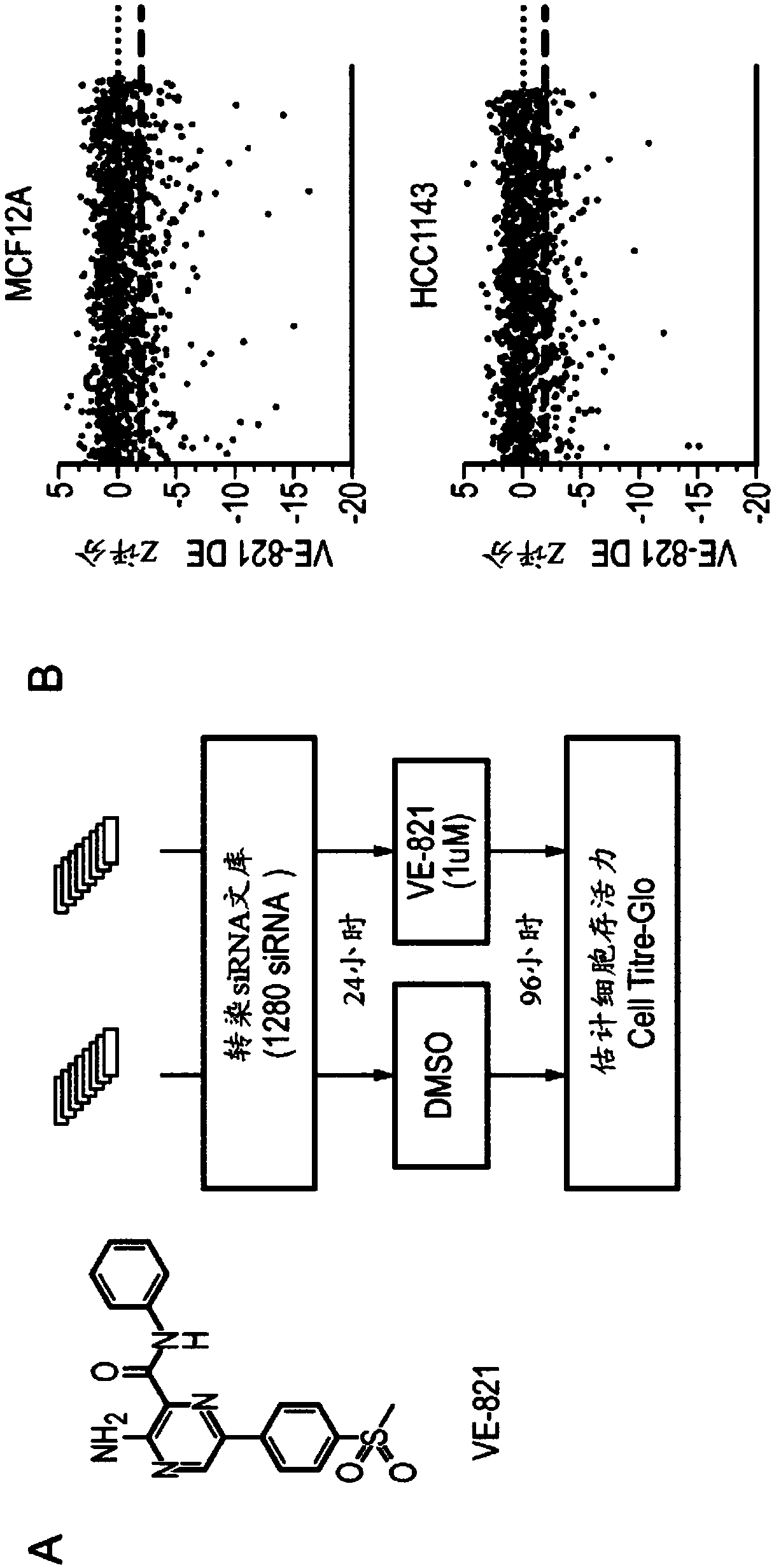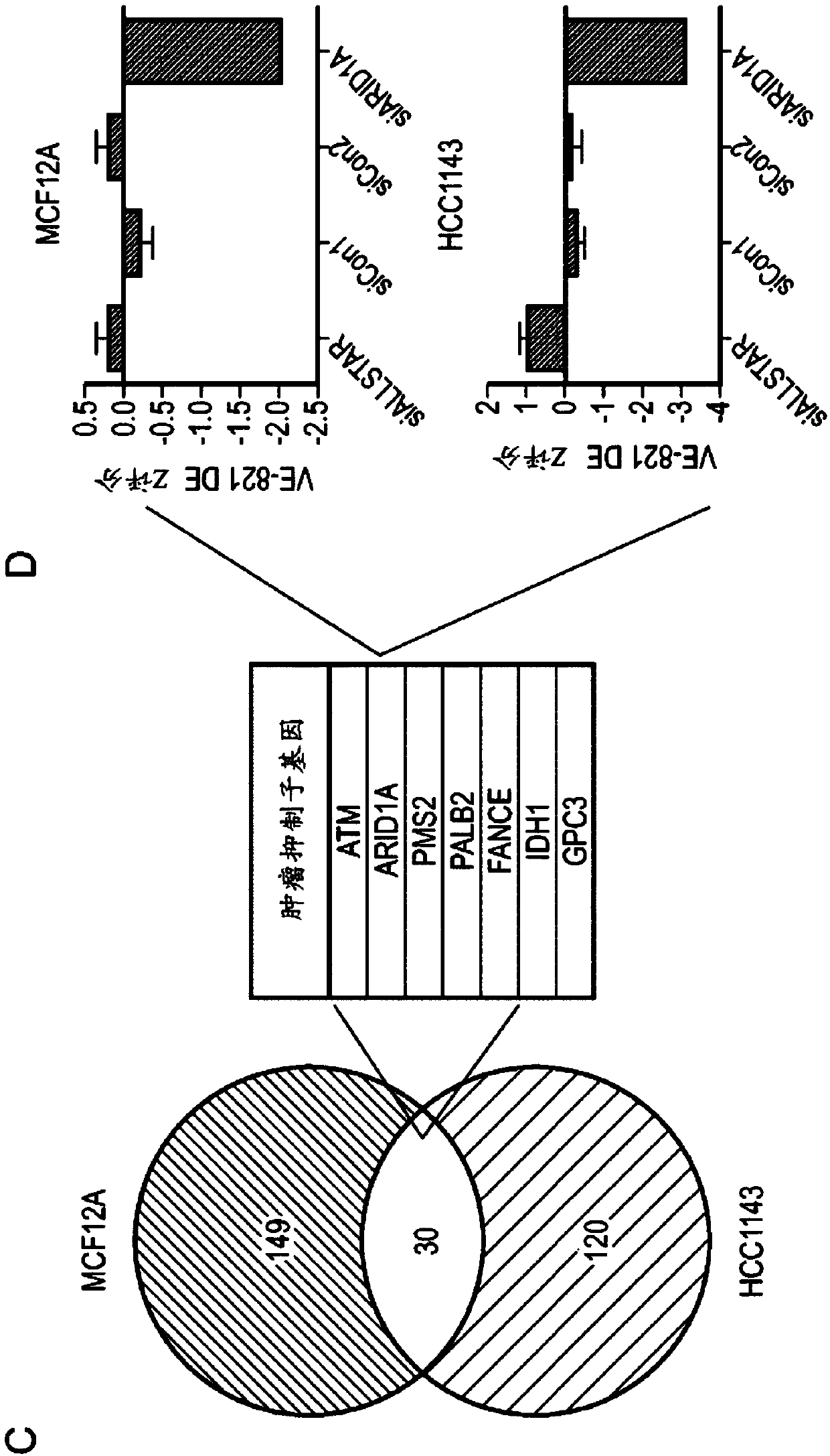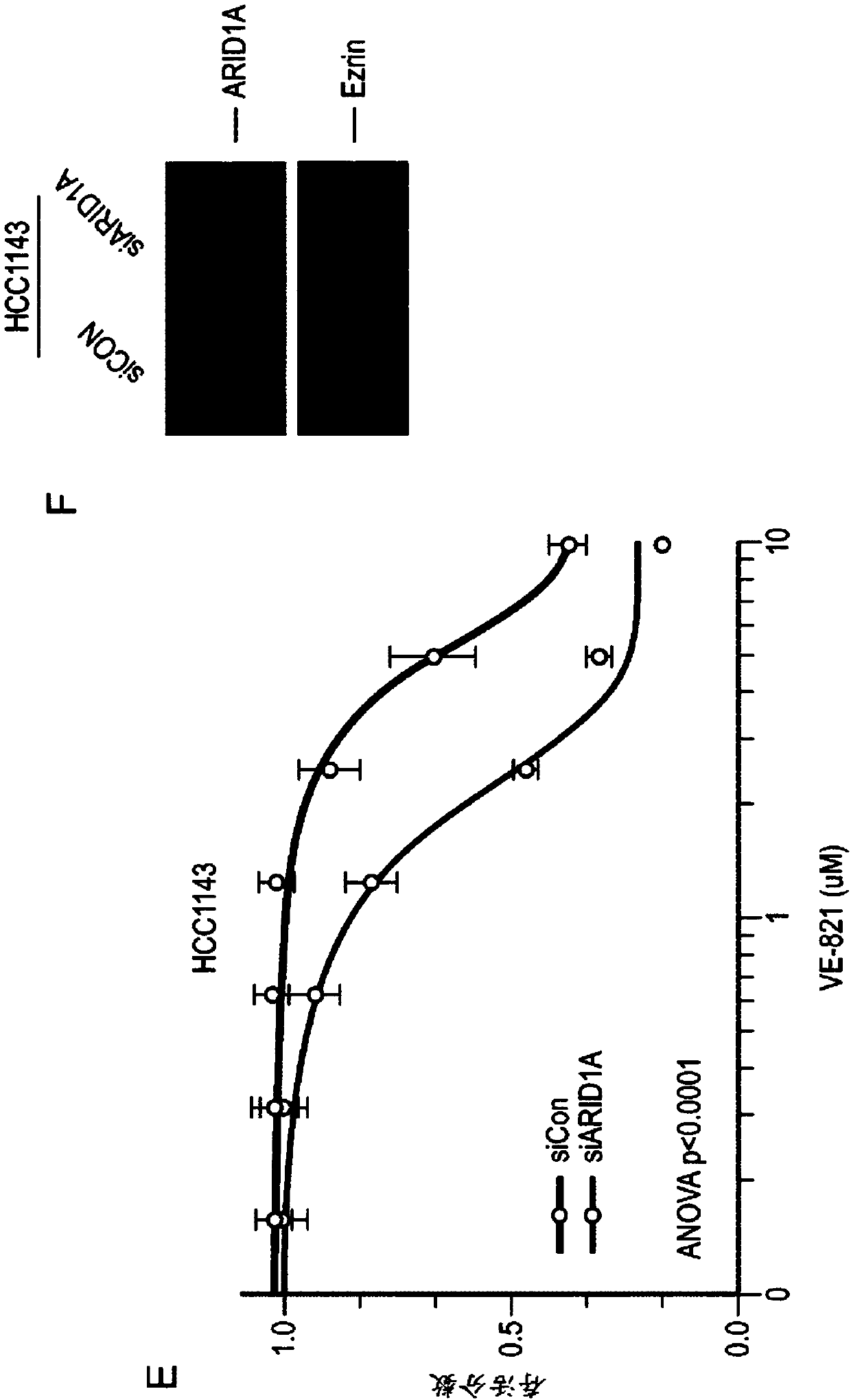Inhibitors of ataxia-telangiectasia mutated and rad3-related protein kinase (ATR) for use in methods of treating cancer
A technology of protein kinase inhibitors and telangiectasia, applied in the treatment of BAF complex gene mutation or defective cancer, using synthetic lethal materials to treat cancer, can solve problems such as drug treatment differences
- Summary
- Abstract
- Description
- Claims
- Application Information
AI Technical Summary
Problems solved by technology
Method used
Image
Examples
Embodiment 1
[0343] method
[0344] cell culture
[0345] ES2 and TOV21G were obtained from the American Type Tissue Collection. RMG-1, SMOV2, KOC7C, HCH1, OVAS, OVISE, OVMANA, OVTOKO, OVSAYO and KK were kindly provided by Dr. Hiroaki Itamochi (Tottori University School of Medicine, Yonago, Japan). Ovarian clear cell carcinoma lines were grown in McCoys with 10% FCS. The identity of the cell lines was confirmed in March 2013 by short direct repeat (STR) typing using the StemElite kit (Promega). The ARID1A HCT116 isogenic cell line was obtained from Horizon Discovery and grown in McCoys with 10% FCS. Arid1a null and wild-type mouse embryonic stem cells were obtained from Dr. Zhong Wang (Harvard Medical School, USA) and grown on gelatin-coated plates in DMEM with 10% FCS supplemented with 0.1 mM NEAA, 1 mM pyruvate Sodium, 0.1 mM β-mercaptoethanol and 2000 U LIF / ml.
[0346] VE-821 siRNA Screening
[0347] siRNA library was purchased from Dharmacon. Genes were selected as described in...
Embodiment 2
[0387]A more recently used approach to identify therapeutic targets in cancer is to identify and exploit genetic dependencies, such as synthetic lethal and gene-addictive effects, that are associated with defects in specific cancer driver genes. For example, the synthetic lethal interaction between BRCA1 or BRCA2 tumor suppressor genes and small molecule PARP inhibitors provides a rationale for the use of PARP inhibitors in the treatment of BRCA1 / 2 mutant ovarian and prostate cancers (Lord, Tutt et al. 2015, Mateo, Carreira et al. 2015). This specific synthetic lethal interaction targets defective tumor suppressor genes by inhibiting PARP1, a component of the DNA damage response (DDR) molecular network. In human cells, as in lower organisms, DDR consists of a series of overlapping mechanisms that maintain genome integrity in the face of DNA damage (Lord and Ashworth 2016). One of the key elements in several conserved DDR pathways is the kinase ATR (ataxia telangiectasia and R...
PUM
 Login to View More
Login to View More Abstract
Description
Claims
Application Information
 Login to View More
Login to View More - R&D
- Intellectual Property
- Life Sciences
- Materials
- Tech Scout
- Unparalleled Data Quality
- Higher Quality Content
- 60% Fewer Hallucinations
Browse by: Latest US Patents, China's latest patents, Technical Efficacy Thesaurus, Application Domain, Technology Topic, Popular Technical Reports.
© 2025 PatSnap. All rights reserved.Legal|Privacy policy|Modern Slavery Act Transparency Statement|Sitemap|About US| Contact US: help@patsnap.com



